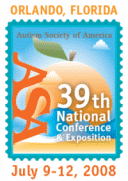| Presenters: | Melissa Dubie, M.S., Indiana Resource Center for Autism, Educational Consultant - Melissa Dubie is an educational consultant at Indiana Resource Center for Autism (IRCA) at Indiana Institute on Disability and Community. Melissa’s experience includes 18 years of teaching and consulting in public schools. Currently, Melissa presents at many conferences sponsored by IRCA and recently in Ohio at the 2007 NATTAP conference.
Catherine Davies, M.Ed, M.Sc., C., Psychol., Indiana Resource Center for Autism, Educational Consultant - Catherine Davies was a Clinical Psychologist in the UK specializing in developmental disabilities. She worked for TEACCH as a Psychoeducational Therapist and was Clinical Director of a college program for adults with Asperger Syndrome. Currently, Catherine works as an Educational Consultant for Indiana Resource Center for Autism.
|
|
Rationale: Kinsey (1948) and Robinson et al. (1976) believed sexual expression is essential to an individual’s well being. Later, during the 1990’s (Ruble & Dalrymple, 1993; Van Bougondien, Reichle, & Palmer, 1997) researchers surveyed families to understand their concerns for their sons and daughters on the autism spectrum during adolescence with questions regarding being sexually active. Then in 1991, Ousley and Mesibov interviewed higher functioning individuals with autism to understand what their knowledge and interests were in regards to their sexuality. In both cases, adolescents with autism spectrum disorder had not only been active sexually for many years but also wanted to learn more about their bodies. This research supports the need to teach individuals on the autism spectrum about their own bodies and increase their knowledge about their own sexual health in order to respond in a variety of situations. Assessment: For their students the instructors created an initial pre-test assessment based on other questionnaires (White, et al., 1977; and Derogatis & Meliseratos, 1982) but adapted to meet the individual needs of this group of adults with Asperger’s Syndrome. The two main focuses were on physiological aspects in the areas of human anatomy and reproduction, sexually transmitted infections, and choices for contraception. Followed by a self questionnaire of one’s own psychological needs which resulted in the desire to teach relationships skills (e.g., flirting, interpreting non-verbal behavior, making and keeping friends, decision making, and developing long term relationships with the same and opposite sex). At the middle and at the end of the semester the students were assessed on their progress in the areas of attendance, participation in class, organization of their resource guide, completing homework, and improved knowledge. Examples of course reports, quizzes, and rubrics will be included in the presentation. Issues surrounding assessment of the student’s application of the skills into their everyday lives will be discussed. Developing a Curriculum: No one curriculum was available that met the needs of the students. Information was therefore derived from a variety of curricula (Henault, 2006; Kempton, 1993; Baker, 2005) and lessons created from multiple resources including a variety of books, video clips, movie scenes, videotaping, community restaurants, and speakers from community agencies. Resources will be listed and the process of how to adapt materials written for typically developing students compared to individuals with Asperger’s Syndrome will be discussed.Teaching Strategies: Konstantareas and Lundy (1997) interviewed individuals on the autism spectrum between the ages of 16-59. Using a sex education curriculum, they discovered individuals interpreted the vocabulary too literally thus confusing the meaning. Ways that the instructors were able to capitalize on individuals learning styles (e.g., adding visual supports and using student’s interests) and minimize the impact of individual’s deficits (e.g., handwriting skills, reduce less relevant material, teach in small group and individual sessions) on their learning will be outlined. Conclusions and Discussion: Advantages and disadvantages of the approach outlined will be discussed together with how to implement your own ideas knowing individual’s with Asperger’s Syndrome. Handouts will be provided that include examples of how the speakers evaluated their own curriculum and teaching strategies and time allocated to answer participant questions or engage in related discussion. Contribution to Best Practices: The need for good quality teaching regarding sex education and relationships in typically developing college students has been well documented (SIECUS, 2007). While anecdotal evidence suggests this would also be true of young adults with Asperger Syndrome yet little research exists in this area. However, many authors who have ASD have written about difficulties faced in their lives because they were inadequately prepared for building relationships (Spicer, 1998; Willey, 1999; Williams, 1994), “Sex education is something that is acquired through a systematic process for many of us with ASD, this means that it must be learned in a highly structured way using concrete strategies whenever possible” (Lawson, 2005). Despite the need for good structured curricula in this area nothing exists which would meet the specific needs of young adults with Asperger Syndrome (AS). There are materials designed for individuals with developmental disabilities (Walker-Hirsch, 2007; Rouse & Birch, 1991) at an adolescent age but nothing available for adults with AS. The how-to element of this presentation and emphasis on practical strategies will therefore enable teachers and other professionals to translate research into practice. Individuals with autism will ultimately benefit since their educators will gain skills in order to devise a curriculum which is meaningful, relevant and engaging. In addition, individuals with AS will become informed of the feelings of their own bodies and be able to make responsible decisions towards a healthy life.
|
